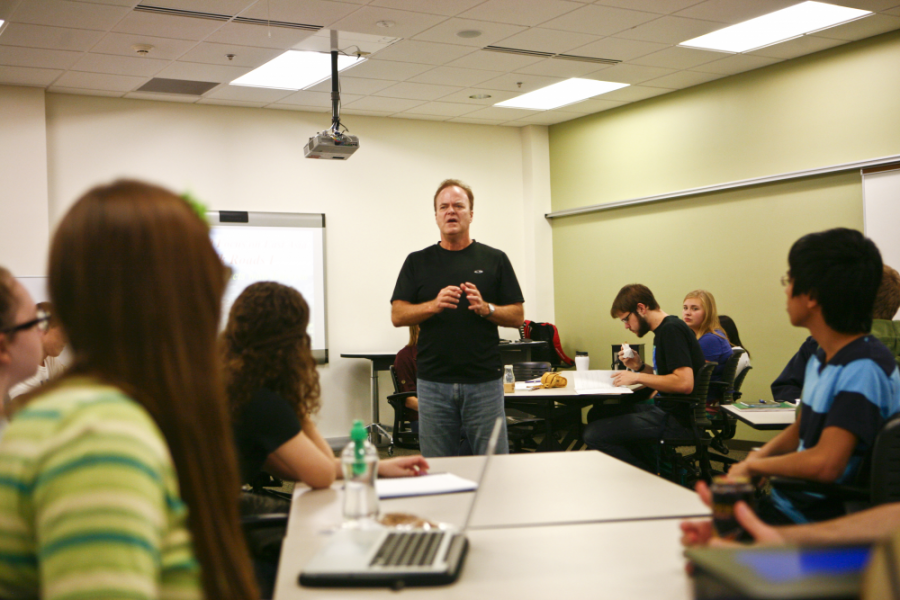Honors adds new interdisciplinary sequences for freshmen
GVL / Eric Coulter
Professor Craig Benjamin speaks to his students in an honors course in the Federick Meijer Honors College
Oct 24, 2012
To accommodate the expanding interests of faculty members and students, the Grand Valley State University Frederik Meijer Honors College is developing new foundational interdisciplinary sequences for its freshmen residents.
In the past few years alone, Honors grew from offering just civilization and history of science sequences to include many new courses, such as Big History, Food for Thought, Theory and Practice of Rights, Alliance and Conflict, Social Product Innovation and How to Love the World.
“It’s really the excitement of a faculty member that gets it started, or a core of faculty members that get excited,” said Jeff Chamberlain, director of the Honors College. “In most cases, it starts off with one or two faculty members at the core, and then they just start to build enthusiasm for those sequences.”
Robyn Toth, the Honors office assistant, said three more sequences will be added to the course options next fall. Although the official names are not yet decided, the topics of the sequences are urbanism, national securities and Latin American civilization—a sequence that was available years ago and is now being brought back.
New sequences are first listed as HNR 280, which is in an Honors topics category. This means that the course is running before it has been sent through the curriculum process, Chamberlain said, adding that getting a class into the catalog is a long process that goes through the university.
The course first has to go through the Brooks College of Interdisciplinary Studies college curriculum committee. Then the dean needs to approve it, and finally it gets sent to the university curriculum committee.
“At any stage, they can come back and say they want more information or amendments on things,” Chamberlain said. “So it sometimes takes a year or two years to approve a course that way, a sequence especially.”
But the work pays off in the end.
Toth said it is important for a university to offer an Honors program.
“It gives students an opportunity to dig deeper,” Toth said. “It expands their knowledge on all the different areas of a general education program.”
And that’s the purpose of the interdisciplinary model. Students are usually team-taught by multiple Honors faculty members, who bring skills from their various disciplines and combine them to give students a comprehensive look at a particular subject. For example, a civilization sequence might cover a certain geographic location’s art, history and culture. Through the yearlong, six-credit-per-semester sequences, all freshmen Honors students learn the general education skills in an integrated fashion.
Janaan Decker, the Honors student services coordinator, said Honors gives students and faculty members the opportunity to come together as a community and create and develop things that they normally couldn’t.
“It gives students the opportunity to try many things, as well as faculty and staff, too,” Decker said. “We’ve developed a lot of pilot programs that have been very successful.”
The Honors program and the sequences courses give students the opportunity to dig deeper into the topic and be challenged, Chamberlain said.
“I think every student at a university ought to be taken at the level they come in and be encouraged and challenged to do as much as they can possibly do, not unreasonably or beyond what you can endure but to be able to develop your skills they way they are,” Decker said.
Chamberlain said the Honors program is growing about 15 percent a year while the university is growing about 1 percent a year.
“We just love the students that are here,” Chamberlain said. “It’s an absolute joy working with them and they sell the program as much as anything else.”
[email protected]























